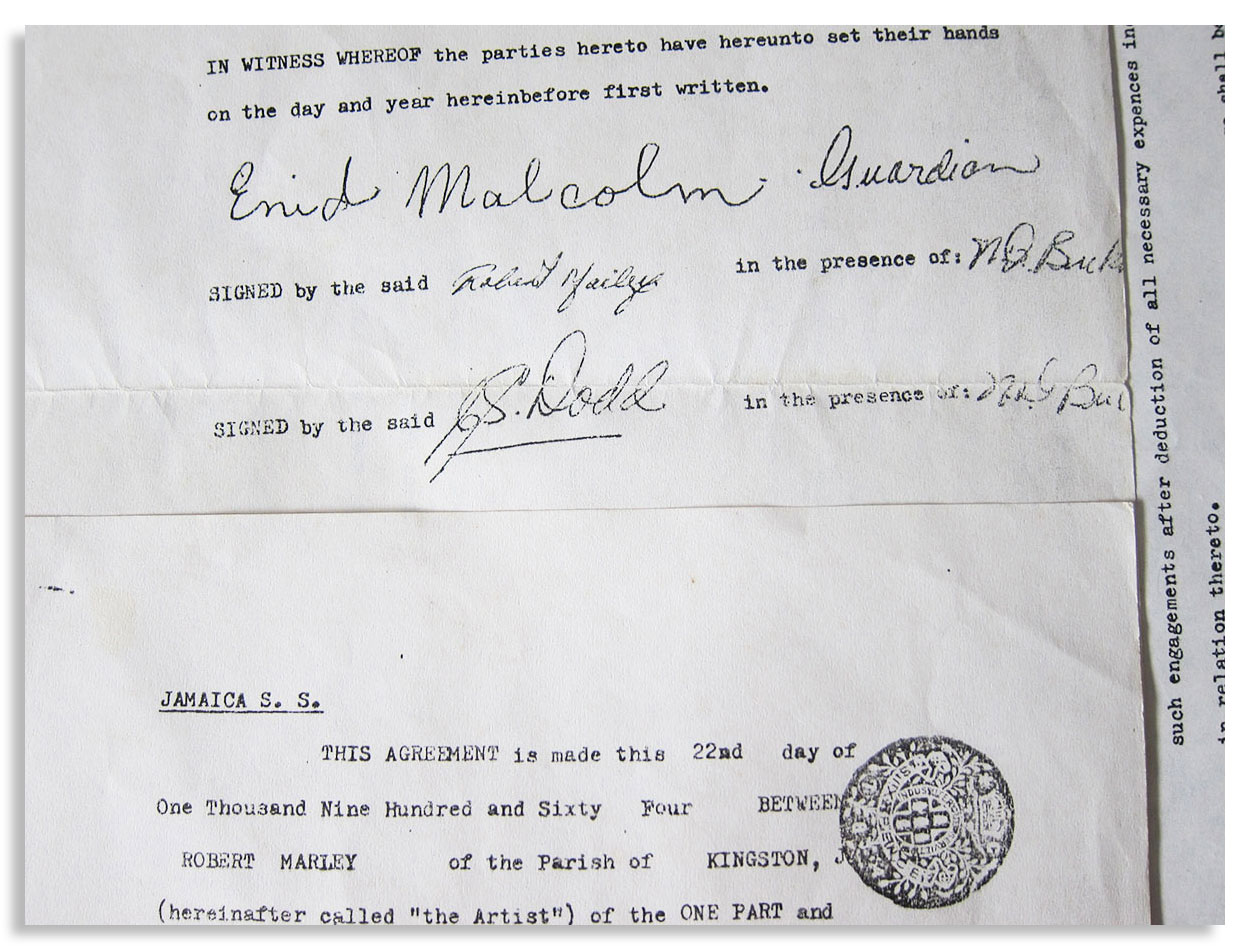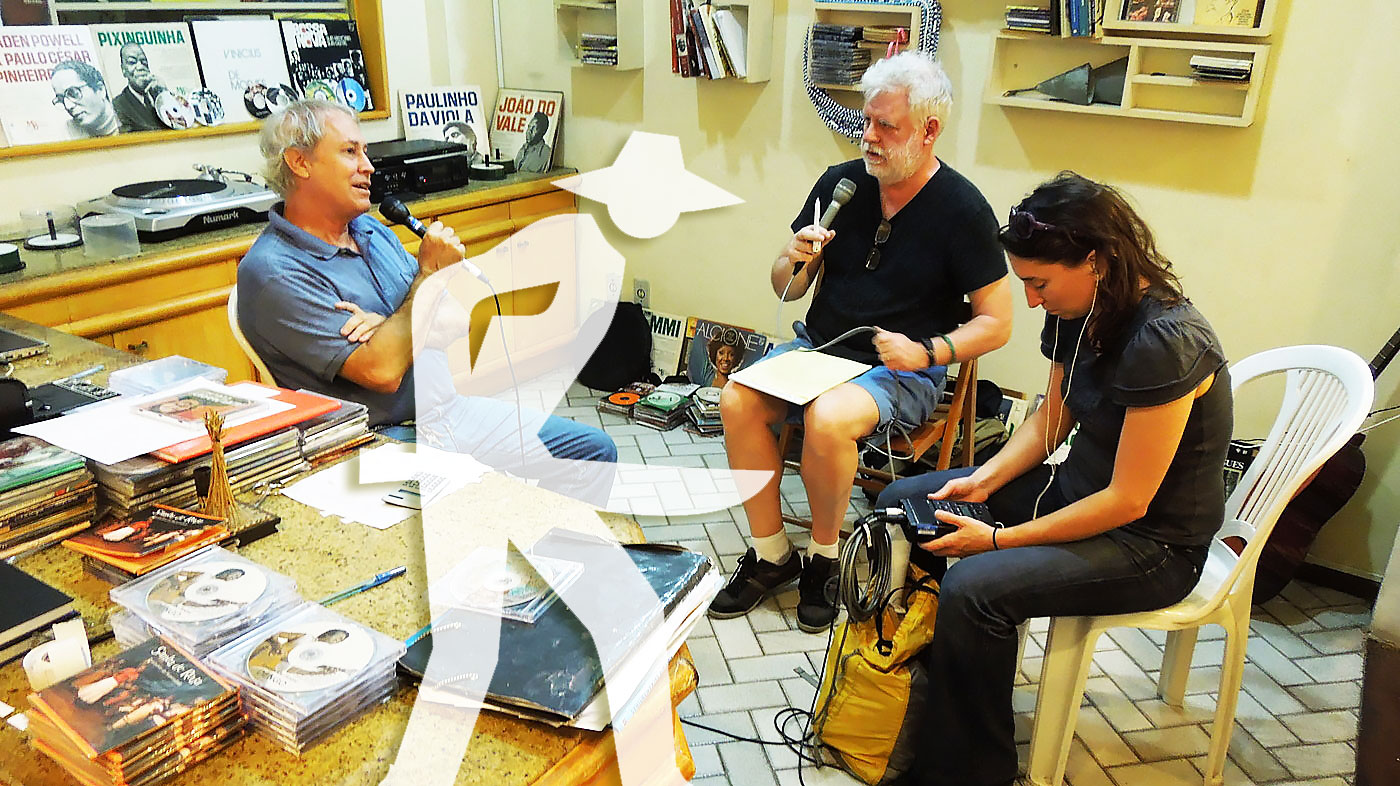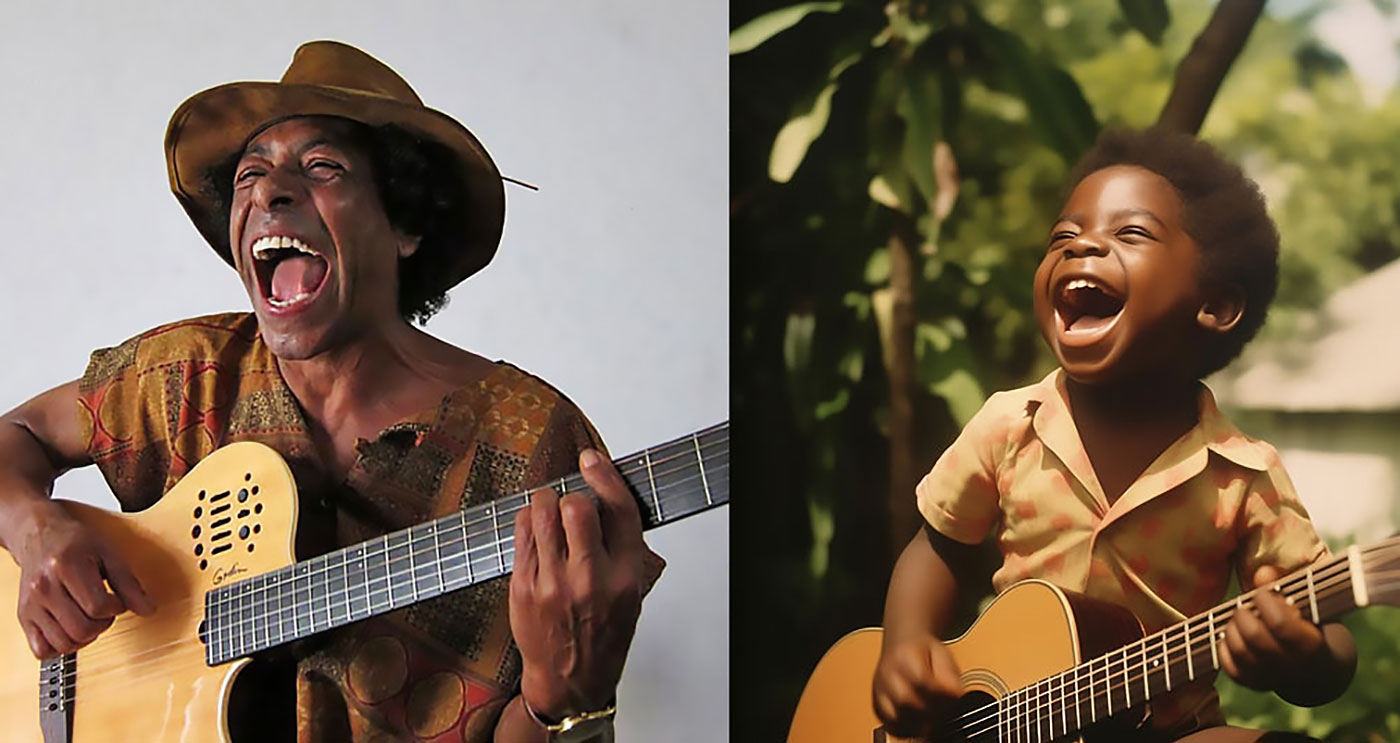CURATION
- from this page: by Matrix
Network Node
- Name: Wadada Leo Smith
- City/Place: Los Angeles, California
- Country: United States
Current News
-
What's Up?
Artist Statement
Over the last several years, I’ve come to great conflict in accepting the word “improvisation” and its common use in practice as being able to define what I and some of my colleagues are doing today.
Since “improvisation” has been adopted in the academic fields of inquiry, it, “improvisation” as an idea has come to mean almost anything conceptually. The word and the understanding of “improvisation” has lost its uniqueness and has reduced its capacity to capture the musical creation of artists such as: Scott Joplin, Ma Rainey, Louis Armstrong, Ferdinand “Jelly Roll” Morton, Thelonious Monk, Mary Lou Williams, Duke Ellington, Paul Gonsalves, John Lewis, Miles Davis, Bessie Smith, Billie Holiday, Charlie Parker, Ornette Coleman, Sun Ra, Lester Bowie, Alice Coltrane, George Russell, Geri Allen, Jeanne Lee, John Coltrane, Don Cherry, Cecil Taylor, Albert Ayler, Anthony Braxton, Leroy Jenkins, Carla Bley, Henry Threadgill, Roscoe Mitchell, Joseph Jarman, Muhal Richard Abrams and the creative music community.
There are five types of creation. The word Create has three types of classification, and Creation has two.
I offer the word Create as a clear definition, whose meaning is in direct context with the process of making art in the present moment. Create also refers to a performer in an ensemble who is creating their own part while the ensemble is playing music that is composed or learned.
In addition, the second use of the word Create means that a performer is creating a solo that is dominant in relationship to the ensemble. It is dominant because the soloist is not dominated by the ensemble’s performance, but the ensemble is depended upon the soloist. Also, it is a new element added to the music and has more power than a performer creating a line to match the composed music; here it’s just the opposite.
Third, if there are two or more soloing at the same time within the grid as a collective of soloists, this is known as a Creation.
Creation serves as the opposite of composition, and therefore it refers to a work of art in the same respect as composition. It is not unlike composition in this sense, it has signs and symbols which could also be found in composition. Also, unlike composition the performers use those signs and symbols to generate a work of art, whose dimensions are realized in the present moment. We call that art-object Creation. Creation should be copyrighted as a musical work owned by the composer-performer, soloist, and the collective soloists.
I am confident in the future of creative music, because one day there will be a group of young men and women scholars who will care about this music, and document their research concerning the art forms that the creative artist has realized. Those future scholars will put the ideas of the creative music back into the flow of world knowledge and in a profound language that any person can come to know what happened in the performance arts on this little planet, Earth.
The creative artists have always strived to make the world a better place through their ideas and music performances, serving all people. Creative music and the arts are for everyone and most specifically those who can and will make the effort to confront themselves in a direct search for truth. And because of their efforts, those people live adventurously in their discoveries of themselves and the secrets of life.
What we discover is right in front of us, and also enclosed inside of our hearts, just waiting for us to realize and accept our presence on this planet.
What defines all of us as human beings is the inspiration and knowledge to make coherent choices, informed through science, art, and authentic spiritual practice to develop a genuine care for others and the world we live in.
Life & Work
-
Bio:
Wadada Leo Smith was born in Leland, Mississippi, and his musical life began in high school concert and marching bands. At the age of thirteen, he became involved with the Delta Blues and other music traditions.
Mr. Smith received his formal musical education from his stepfather Alex “Little Bill” Wallace, composer and guitarist, and one of the pioneers of electric guitar in Delta Blues. He was further educated through the U.S. Military band program at Fort Leonard Wood, Missouri (1963); Sherwood School of Music (1967-69); and Wesleyan University (1975-76). He has researched a variety of music cultures: African, Japanese, Indonesian, European and American.
Wadada Leo Smith, trumpeter, multi-instrumentalist, composer, and improviser is one of the most acclaimed creative artists of his times, both for his music and his writings. For the last five decades, Mr. Smith has been a member of the historical and legendary AACM collective. He distinctly defines his music as “Creative Music.” Mr. Smith’s diverse discography reveals a recorded history centered around important issues that have impacted his world.
Mr. Smith started his research and designs in search of Ankhrasmation in 1965. His first realization of this language was in 1967, which was illustrated in the recording of The Bell (Anthony Braxton: ‘Three Compositions of New Jazz’), and has played a significant role in his development as an artist, ensemble leader, and educator.
He has been on the faculty of the following institutions: The University of New Haven (1975-’76), The Creative Music Studio in Woodstock, NY (1975-’78), and Bard College (1987-’93). From 1994 he was on the faculty at The Herb Alpert School of Music at California Institute of the Arts. There he was the director of the African-American Improvisational Music program. Mr. Smith retired from CalArts in 2013.
He is a member of these professional organizations: ASCAP, Chamber Music America, and the Association for the Advancement of Creative Musicians.
Mr. Smith’s awards and commissions include: DownBeat Magazine’s 65th Annual Critics Poll: Artist, Trumpet, and Album of the Year (America’s National Parks). Mr. Smith is featured on the cover of the August 2017 issue of DownBeat. And in the 2016 Jazz Times’ Critics Poll, he was honored the Artist of the Year.
His America’s National Parks earned wide praise as one of the best albums of 2016 from media like The New York Times, the NPR Jazz Critics Poll, The Wire and many other publications.
A finalist for the 2013 Pulitzer Prize in Music, he received the 2016 Doris Duke Artist Award and earned an honorary doctorate from CalArts, where he was also celebrated as Faculty Emeritus.
Mr. Smith was also honored by the Jazz Journalists Association as their 2017 Musician of the Year as well as the 2017 Duo of the Year for his work with Vijay Iyer. The JJA also named him their 2016 Trumpeter of the Year, 2015 Composer of the Year, and 2013 Musician of the Year. Also, in 2013 he was also selected as DownBeat’s Composer of the Year and he graced the cover of that magazine in November 2016.
Wadada Leo Smith’s Ankhrasmation language scores have recently been exhibited in major American museums. In October 2015, The Renaissance Society at The University of Chicago presented the first comprehensive exhibition of these language scores. In 2016, the scores were also featured in the Hammer Museum’s ‘Made in L.A.’ exhibition; he also received the Hammer Museum’s 2016 Mohn Award for Career Achievement honoring brilliance and resilience.
His scores have also been shown at the Kalamazoo Institute of Arts, Michigan, and Kadist Art Foundation in San Francisco, California.
Ten Freedom Summers, (Defining Moments in the History of the United States of America) is a large work (four-CD box set) inspired by the civil rights movement. TFS has been awarded: MAP Fund Award (2011), Chamber Music America New Works Grant (2010), NEA Recording Grant (2010), commissioned by Southwest Chamber Music with support from the James Irvine Foundation and Clarence E. Heller Charitable Foundation, and Fellow of the John Simon Guggenheim Memorial Foundation (2009-2010).
He was awarded an Other Minds residency, that commissioned Taif, a string quartet (2008); simultaneously a Fellow of the Jurassic Foundation (2008); FONT (Festival of New Trumpet) Award of Recognition (2008); Islamic World Arts Initiative of Arts International (2004); Fellow of the Civitela Foundation (2003); Fellow at the Atlantic Center for the Arts (2001); “Third Culture Copenhagen” in Denmark presented a paper on Ankhrasmation (1996); Meet the Composer/Lila Wallace-Reader’s Digest Commissioning Program (1996); Asian Cultural Council Grantee to Japan (June-August 1993); Meet the Composer/Lila Wallace-Reader’s Digest Commissioning Program (1990); New York Foundation on the Arts Fellowship in Music (1990); Numerous Meet the Composer Grants (since 1977); and National Endowment for the Arts Music Grants (1972, 1974, 1981).
Writings:
Mr. Smith’s music philosophy Notes (8 Pieces) Source a New. World Music: Creative Music, originally published by Kiom Press (1973), translated and published in Japan by Zen-On Music Company Ltd. (1976). In 1981 Notes was translated into Italian and published by Nistri-Litschi Editori. An expanded edition of Notes (8 Pieces) has been published in 2015.
In 1996 Mr. Smith presented a paper on his Ankhrasmation music language at the “Third Culture Copenhagen” conference, along with artists, scientists and philosophers. His interview was recorded for Denmark T.V., broadcasted in September 1996.
Some of the artists Mr. Smith has performed with are: Anthony Braxton, Leroy Jenkins, Roscoe Mitchell, Henry Threadgill, Lester Bowie, Joseph Jarman, Cecil Taylor, Steve McCall, Anthony Davis, Carla Bley, Don Cherry, Jeanne Lee, Tadao Sawai, Muhal Richard Abrams, Ed Blackwell, Kazuko Shiraishi, Han Bennink, Marion Brown, Charlie Haden, Malachi Favors Magoustous, Jack Dejohnette, Vijay Iyer, Ikue Mori, Min Xiao Fen, Bill Laswell, John Zorn, Ronald Shannon Jackson, Frank Lowe, among many others.
His compositions have been performed by many contemporary music ensembles: RedKoral Quartet, Orkiestra Symfoniczna NFM (Wroclaw), AACM-Orchestra, Kronos Quartet, Da Capo Chamber Player, New Century Players, San Francisco Contemporary Music Players, Contemporary Chamber Players (University of Chicago), S.E.M. Ensemble, Southwest Chamber Music, Del Sol String Quartet, New York New Music Ensemble, ne(x)tworks, and California E.A.R. Unit.
For over two decades, Mr. Smith has been creating music for multiple ensembles. Some of these works take several days to perform: Ten Freedom Summers (2011, RedCat, Los Angeles); “Tabligh” for double-ensemble was performed by Golden Quartet and Classical Persian ensemble at Merkin Concert Hall (2006); Golden Quartet and Suleyman Erguner’s Classical Turkish ensemble at Akbank Music Festival in Istanbul (2007). His largest work “Odwira” for 12 multi-ensembles (52 instrumentalists) was performed at California Institute of the Arts (March 1995).
Contact Information
- Email: [email protected]
-
Management/Booking:
Publicist
Braithwaite & Katz Communications
Ann Braithwaite
[email protected]
Media | Markets
- ▶ Buy My Music: http://wadadaleosmith.com/store/
- ▶ Twitter: wadadaleosmith
- ▶ Website: http://wadadaleosmith.com
- ▶ YouTube Music: http://music.youtube.com/channel/UChfpJZrsFfTkhqAa2AJ3EoQ
- ▶ Spotify: http://open.spotify.com/album/3xDXoIbfaTqHfSUdi18qdB
- ▶ Spotify 2: http://open.spotify.com/album/6xCYDH1fsnFx94oFBjvgx4
- ▶ Spotify 3: http://open.spotify.com/album/3SV9GwM6bs5vQKcPw8PtIi
- ▶ Spotify 4: http://open.spotify.com/album/4LjJH37eJ7zdMyWajUOSOU
- ▶ Spotify 5: http://open.spotify.com/album/1CByLqrq8w28S81rNODWia
- ▶ Spotify 6: http://open.spotify.com/album/4xzbwtG04d17xRG9LJSqUV
Clips (more may be added)
-
Wadada Leo Smith – Ten Freedom Summers
382 views
-
Vijay Iyer / Wadada Leo Smith
918 views
The Matrix is a small world network. Like stars coalescing into a galaxy, creators in the Matrix mathematically gravitate to proximity to all other creators in the Matrix, no matter how far apart in location, fame or society. This gravity is called "the small world phenomenon". Human society is a small world network, wherein over 8 billion human beings average 6 or fewer steps apart. Our brains contain small world networks...
![]() Wolfram MathWorld on the Small World Phenomenon
Wolfram MathWorld on the Small World Phenomenon
![]() Matemática Wolfram sobre o Fenômeno Mundo Pequeno
Matemática Wolfram sobre o Fenômeno Mundo Pequeno
"In a small world, great things are possible."

It's not which pill you take, it's which pathways you take. Pathways originating in the sprawling cultural matrix of Brazil: Indigenous, African, Sephardic and then Ashkenazic, European, Asian... Matrix Ground Zero is the Recôncavo, contouring the Bay of All Saints, earthly center of gravity for the disembarkation of enslaved human beings — and the sublimity they created — presided over by the ineffable Black Rome of Brazil: Salvador da Bahia.
("Black Rome" is an appellation per Caetano Veloso, son of the Recôncavo, via Mãe Aninha of Ilê Axé Opô Afonjá.)
"Dear Sparrow: I am thrilled to receive your email! Thank you for including me in this wonderful matrix."
—Susan Rogers: Personal recording engineer for Prince, inc. "Purple Rain", "Sign o' the Times", "Around the World in a Day"... Director of the Berklee Music Perception and Cognition Laboratory
"Thanks! It looks great!....I didn't write 'Cantaloupe Island' though...Herbie Hancock did! Great Page though, well done! best, Randy"
"We appreciate you including Kamasi in the matrix, Sparrow."
—Banch Abegaze: manager, Kamasi Washington
"This is super impressive work ! Congratulations ! Thanks for including me :)))"
—Clarice Assad: Pianist and composer with works performed by Yo Yo Ma and orchestras around the world
"Dear Sparrow, Many thanks for this – I am touched!"
—Julian Lloyd-Webber: UK's premier cellist; brother of Andrew Lloyd Webber (Evita, Jesus Christ Superstar, Cats, Phantom of the Opera...)
"Thanks, this is a brilliant idea!!"
—Alicia Svigals: World's premier klezmer violinist
Developed here in the Historic Center of Salvador da Bahia ↓ .
![]() Bule Bule (Assis Valente)
Bule Bule (Assis Valente)
"♫ The time has come for these bronzed people to show their value..."
Production: Betão Aguiar
MATRIX MODUS OPERANDI
Recommend somebody and you will appear on that person's page. Somebody recommends you and they will appear on your page.
Both pulled by the inexorable mathematical gravity of the small world phenomenon to within range of everybody inside.
And by logical extension, to within range of all humanity outside as well.
MATRIX (PARDAL)
I'm Pardal here in Brazil (that's "Sparrow" in English). The deep roots of this project are in Manhattan, where Allen Klein (managed the Beatles and The Rolling Stones) called me about royalties for the estate of Sam Cooke... where Jerry Ragovoy (co-wrote Time is On My Side, sung by the Stones; Piece of My Heart, Janis Joplin of course; and Pata Pata, sung by the great Miriam Makeba) called me looking for unpaid royalties... where I did contract and licensing for Carlinhos Brown's participation on Bahia Black with Wayne Shorter and Herbie Hancock...
...where I rescued unpaid royalties for Aretha Franklin (from Atlantic Records), Barbra Streisand (from CBS Records), Led Zeppelin, Mongo Santamaria, Gilberto Gil, Astrud Gilberto, Airto Moreira, Jim Hall, Wah Wah Watson (Melvin Ragin), Ray Barretto, Philip Glass, Clement "Sir Coxsone" Dodd for his interest in Bob Marley compositions, Cat Stevens/Yusuf Islam and others...
...where I worked with Earl "Speedo" Carroll of the Cadillacs (who went from doo-wopping as a kid on Harlem streetcorners to top of the charts to working as a janitor at P.S. 87 in Manhattan without ever losing what it was that made him special in the first place), and with Jake and Zeke Carey of The Flamingos (I Only Have Eyes for You)... stuff like that.

Yeah this is Bob's first record contract, made with Clement "Sir Coxsone" Dodd of Studio One and co-signed by his aunt because he was under 21. I took it to Black Rock to argue with CBS' lawyers about the royalties they didn't want to pay (they paid).
MATRIX MUSICAL
I built the Matrix below (I'm below left, with David Dye & Kim Junod for U.S. National Public Radio) among some of the world's most powerfully moving music, some of it made by people barely known beyond village borders. Or in the case of Sodré, his anthem A MASSA — a paean to Brazil's poor ("our pain is the pain of a timid boy, a calf stepped on...") — having blasted from every radio between the Amazon and Brazil's industrial south, before he was silenced. The Matrix started with Sodré, with João do Boi, with Roberto Mendes, with Bule Bule, with Roque Ferreira... music rooted in the sugarcane plantations of Bahia. Hence our logo (a cane cutter).
A Massa (do povo carente) / The Masses (of people in need)

-
Add to my PlaylistA Massa - Raymundo Sodré (7,093 plays)
-
Add to my PlaylistSina de Cantador - Raymundo So... (6,909 plays)
-
Add to my PlaylistMagnetismo - Raymundo Sodré ... (6,353 plays)
-
Add to my PlaylistSacando a Cana - Raymundo Sodr... (5,957 plays)
-
Add to my PlaylistMêrêrê - Raymundo Sodré (5,465 plays)
-
Add to my PlaylistJardim do Amor - Raymundo Sodr... (4,677 plays)
-
Add to my PlaylistDebaixo do Céu - Raymundo Sodr... (4,151 plays)
-
Add to my PlaylistDesejo de Amar - Raymundo Sodr... (3,861 plays)
-
Add to my PlaylistOração pra Yá Oxum - Raymundo ... (3,741 plays)
-
Add to my PlaylistYá África - Raymundo Sodré (3,509 plays)
-
Add to my PlaylistMeu Rio, Cadê o Papel - Raymun... (3,177 plays)
-
Add to my PlaylistCasa de Trois - Raymundo Sodré... (2,896 plays)
-
Add to my PlaylistMulher é Laço que Prende o Coração do Vaqueiro - R... (2,556 plays)







































































































































































































































































































































































































































































